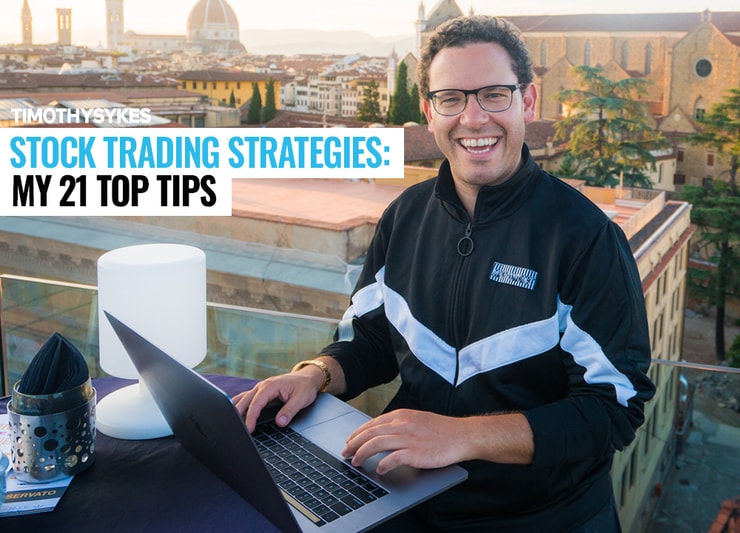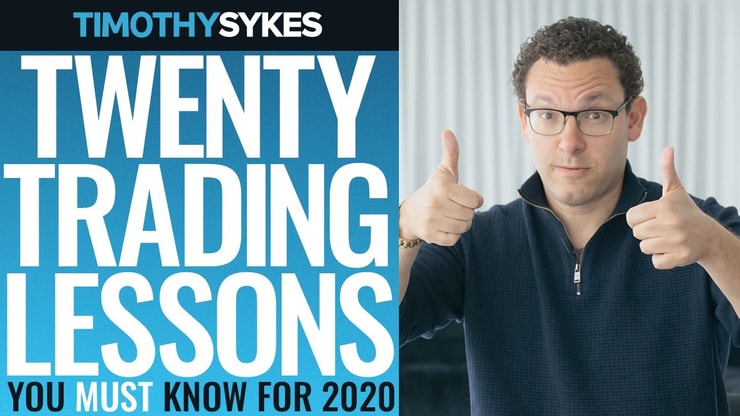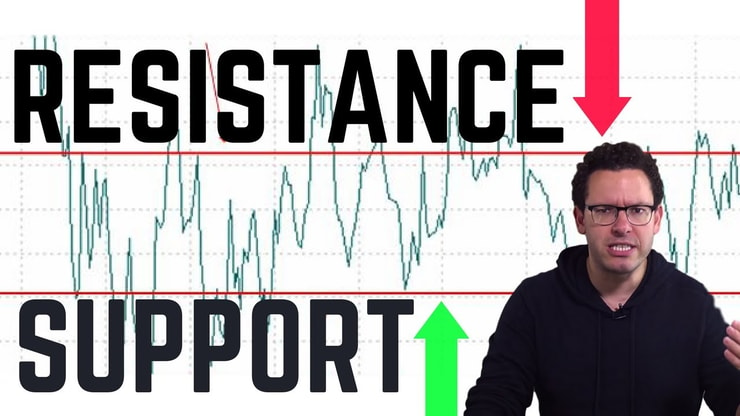If you’re looking for success in the stock market, you need stock trading strategies that work. That’s why I’m sharing my list of stock market tips for traders.
Here’s the thing: I didn’t have a mentor when I started out in the stock market. It was just me and my computer. It was far from easy and I made a TON of mistakes.
You don’t have to go it alone. Instead, you can learn from someone who’s been there and knows the ropes. Check out my list of trading strategies — and don’t make the mistakes I did.
Table of Contents
- 1 What Exactly Is a Trading Strategy?
- 2 What Can Make Stock Trading Challenging for Some People?
- 3 My Top 21 Stock Market Strategies & Tips
- 3.1 Tip #21: Trade Penny Stocks
- 3.2 Tip #20: Take Singles
- 3.3 Tip #19: The Stock Market Rewards Knowledge and Strategy
- 3.4 Tip #18: Learn From Your Losses and Mistakes
- 3.5 Tip #17: Treat Trading Like a Business
- 3.6 Tip #16: Trading’s Not an Exact Science
- 3.7 Tip #15: Take the Meat of the Move
- 3.8 Tip #14: Learn to Trade in Any Market
- 3.9 Tip #13: Cut Losses Quickly
- 3.10 Tip #12: Only Trade Gimme Setups
- 3.11 Tip #11: Look at the Biggest Percent Gainers
- 3.12 Tip #10: KISS — Keep It Simple, Stupid
- 3.13 Tip #9: You Don’t Have to Trade Every Day
- 3.14 Tip #8: Put in the Time
- 3.15 Tip #7: Use a Trading Journal
- 3.16 Tip #6: Never Follow Anyone’s Alerts — Not Even Mine
- 3.17 Tip #5: Most Stocks Follow the Market
- 3.18 Tip #4: Trade the Stock Not the Company
- 3.19 Tip #3: Avoid FOMO at All Costs
- 3.20 Tip #2: Use the Right Tools for the Job
- 3.21 Tip #1: No One Trade Will Make You Rich
- 4 Stock Market Tips For Beginners
- 5 What Is The Top Trading Strategy for Penny Stocks?
- 6 Frequently Asked Questions About Stock Trading Strategies
- 7 The Bottom Line About Stock Trading Strategies
What Exactly Is a Trading Strategy?
A trading strategy is the set of rules that you trade by. Before you take a trade, you watch for certain criteria that indicate a pattern’s forming.
The pattern must be consistent enough that you can trade the strategy repeatedly over time. For the indicators I check before every trade, check out my “Trader Checklist Part Deux” DVD.
What Can Make Stock Trading Challenging for Some People?
Trading is challenging for people because they don’t have rules. Or they have rules but they don’t follow them.
Trading consistently requires a lot of discipline and the right mindset. When traders become undisciplined and try to beat the market, that’s when the biggest losses occur.
My Top 21 Stock Market Strategies & Tips

Keep in mind that these penny stock trading strategies come from my own experience. They’re what I’ve learned in 20+ of trading, and they come from my desire to help others succeed.
Tip #21: Trade Penny Stocks
Penny stocks are also known as small caps. They have very low market capitalization. In other words, they’re not worth billions of dollars and often aren’t liquid.
Sounds bad, right? It’s not.
When you’re a new trader, you don’t have hundreds of thousands of dollars to play with. At least, I didn’t. So I discovered penny stocks.
I think penny stocks are ideal for the average trader. They’re volatile, which can make them good for small accounts.
Want to learn more about my penny stock trading strategies and patterns, sign up for my 30-Day Bootcamp. It won’t be easy — come ready to study!
Tip #20: Take Singles
Don’t aim for home runs. Go for singles. You can call me Ichiro if you’re a baseball fan. I have a lot of singles. My total profit gain is now $5.7 million.* However, it took 5,612 trades to get there.
Think about that for a bit. A lot of people think you have to make a million dollars in one trade — that you’ll find the next Facebook. You’re won’t.
I want to take singles because they offer better odds for me. If you’re conservative and take small gains, you can build wealth strategically and better manage your risk.
More Breaking News
- Tilray Brands’ Merry Climb: What’s Behind the Shares’ Recent Surge?
- Will MicroStrategy’s Bitcoin Strategy Prove Fruitful Amid Market Fluctuations?
- ARM Holdings: Strategic Meetings and Earnings Performance Spark Market Interest
Tip #19: The Stock Market Rewards Knowledge and Strategy
Too many people are conditioned to rely on 9-to-5 jobs with steady paychecks. Trading isn’t a 9-to-5 job. Your reward depends on your knowledge and strategy.
The more you do in terms of preparation, the smarter you can trade. Focus on making every trade count and get out of the grind.
Tip #18: Learn From Your Losses and Mistakes
Losses are an essential part of your education. I don’t win 100% of the time. If you look at my trades over the past 20+ years, I win roughly 76% of the time.*
Nobody’s perfect. It’s okay. But part of what I teach is how to react to losses. Contain them, manage them, and use them to improve over time.
You need to lose and make mistakes. It can make you a better trader and ideally help you learn to control your losses. More on that later.
Tip #17: Treat Trading Like a Business
For some people, the stock market’s a hobby. It’s no different than baseball cards or fantasy sports. Maybe it’s entertaining or it’s for the action.
I don’t want action. And I don’t like to play guessing games. If a stock doesn’t fit my setup, I don’t trade it. Check out my Sykes Sliding Scale for the indicators I go over before every trade.
If you look at every trade like a business transaction, the game becomes clearer. Even if you only trade a few hours per week, treat those few hours as a business — not a hobby.
Tip #16: Trading’s Not an Exact Science
I use my experience and my knowledge to trade predictable patterns that I’ve used over 20 years.
Every single trade is new and different. Each stock has its own action. But overall the patterns don’t change much because human nature doesn’t change.
Support and resistance levels don’t hold to the exact penny, but I can fall back on my knowledge and understanding of the overall patterns to win more than I lose.
Tip #15: Take the Meat of the Move
Stock prices are unpredictable, especially with penny stocks … That’s why I rarely stay in a play long enough to catch the bottom or top of the move.
In fact, I usually sell too quickly. Perfect timing is a myth. Focus on growing your overall net worth — not perfection.
Rarely will you see me catch the exact bottom or top of a trade. I try to use every trade to grow my overall net worth. Slow and steady wins the race.
Tip #14: Learn to Trade in Any Market
It doesn’t matter if the market’s up or down. I find opportunities in all markets.
I’m not biased like so many other traders. That gives me an advantage over time.
My students and I trade the same opportunities that pop up in every market. We also know it’s crucial to adapt.
Tip #13: Cut Losses Quickly
My top students and I cut losses quickly. We don’t let small mistakes turn into big disasters.
Let’s say, for example, you buy a stock at $10 per share, expecting it to bounce to $11 or $12 per share. Instead, it cracks support. You watch it fall: $9.87, $9.76…
You have two choices: exit the trade and cut losses or hold and hope that it will bounce back.
I opt for cutting losses every time. I might miss out when a stock rallies, but I avoid potentially big disasters by cutting losses quickly.
Tip #12: Only Trade Gimme Setups
One of my haters sent me an email once to say, “You only trade easy patterns. Let me know when you want to be a man and trade the difficult patterns.”
I just responded, “LOL.” Yeah, I trade gimme patterns. That’s not a bad thing.
This isn’t Olympic diving, where judges rank me based on the degree of difficulty. I trade easy setups. My goal is to grow my account, not look like a hero.
Breakouts are one example of the gimme patterns I trade. That’s when a stock shoots above resistance. It happens all the time, but you need excellent technical analysis skills or great software to spot them, like StocksToTrade.
Dip buying is another gimme setup for me — read more about dip buying here.
You have to find the patterns that work for you.
Tip #11: Look at the Biggest Percent Gainers
I want to know the hottest stocks in the market right now. And if it has news, it can be a potential trade … if the news has legs.
If the big percent gain is caused by a paid promotion or media mention, I like to ride the hype and momentum. But I don’t stay in the trade too long.
As I talk about in my book, “An American Hedge Fund,” promoters only pump up the stocks so that they can sell their shares. Once they get out, there’s no more promotion and the stock crashes.
Tip #10: KISS — Keep It Simple, Stupid
A lot of people look down on my strategy and penny stocks. I don’t care. For me, it’s about making money. So I keep it simple with patterns and catalysts.
I know there’s a ton of advanced indicators. They haven’t been that reliable for me.
Tip #9: You Don’t Have to Trade Every Day
Taking a day off when there’s no great trade is smart. Sometimes, the best trade is no trade.
Pretend like you don’t need any money and you’re retired. If there isn’t a good play or you’re too emotional, take time off. Get your head on straight, and live to trade another day.
There will be new trade opportunities around the corner. Just always be prepared.
Tip #8: Put in the Time
You won’t start out as a great trader. No one does.
I have students who study insane hours in the beginning. Others can only put in a little time each day.
It’s a process, so find what works best for you.
Learn what works and optimize your strategy accordingly. It’s key to track how your strategies and patterns perform.
I’m here to teach you — it’s up to you to show up. Even if you can only commit 30 minutes a day, it can still change your life.
Tip #7: Use a Trading Journal
Keep track of your trades — the good, the bad, and the ugly. That’s the key to becoming a better trader.
I use Profit.ly — it’s where you can post trades and track your trading record along with notes. However you track trades, it’s key to be meticulous.
If you don’t know what’s working for you, how will you better prepare? Worse, if you don’t recognize your mistakes, what will stop you from repeating them?
Tip #6: Never Follow Anyone’s Alerts — Not Even Mine
Some promoters want you to follow their trade alerts to the letter. They say, “Here’s when to get in, here’s when to get out. Now go!”
Don’t follow those alerts.
If you’re a Trading Challenge student or you follow me on Profit.ly, you know when I buy and sell. I’m not telling you to trade what I trade. That’s for educational purposes.
I want you to be self-sufficient. I don’t want you to ever have to rely on me or anybody else.
My team and I are just training wheels in the beginning. We’ll help guide you and try to get you on your right path. My top students trade completely on their own after a few years … and that’s a beautiful thing.
Tip #5: Most Stocks Follow the Market
Typically, bull markets are easier for trading, while bear markets can be more challenging.
Stocks generally follow the market. Yep, there are exceptions. 2020 is a good lesson in that. I’ve learned how to trade in any market conditions, and that’s something I teach my students.
Tip #4: Trade the Stock Not the Company
As one of my top students, Tim Grittani, says: “Trade the ticker.”
Companies and management like to lie. They like to hype up their stocks. Essentially, they’re cheerleaders for their own companies.
Once upon a time, I fell for it and I personally lost over $500,000. I learned the hard way.
So heed this important rule: Stick with stocks that are liquid and trade the actual stock. Don’t fall in love with the company and believe in their products. Never hold and hope.
Tip #3: Avoid FOMO at All Costs
FOMO is a trader’s worst nightmare. It can lead to making poor decisions. So If you miss out, don’t worry — you’ll get the next one.
There are so many opportunities. You don’t have to worry about missing out on a single trade. Instead, learn from every one of them and be better prepared the next time.
Tip #2: Use the Right Tools for the Job
I look for the hottest stocks every day, and I need the right tools for the job.
With penny stocks, I look for the biggest percent gainers. And tools like StocksToTrade help a lot. It has scans, charts, Breaking News chat, a social media search tool, and more. And it’s only going to get better. Here’s where you can try it. (I’m a proud investor in STT and I helped design it for trading penny stocks.)
Tip #1: No One Trade Will Make You Rich
No single trade will make you so rich that you never have to trade again. But one bad trade can wipe out your entire trading account.
Think about that for a second. It’s why you must always protect.
It’s OK to start with a small account. Small gains add up. So don’t get greedy and risk too much.
The stock market’s scary if you have no plan. You have to pick the right trades, manage your risk, and build your account over time. It won’t happen overnight.
Stock Market Tips For Beginners

One of the best tips I can give to beginner traders is to learn stock market terms.
If you’re familiar with the jargon, you can better keep up with lessons and avoid missing out on key trading strategies.
Now, here a few more stock market tips for those who have never traded before.
Learn How to Invest in the Stock Market With Little Money
I don’t invest in penny stocks. I trade them. Learn the difference.
And to get started, you don’t need a huge account to trade in the stock market. Especially with penny stocks.
Some traders have started with an account with as little as $500. Some paper trade until they can fund an account. Don’t let a lack of capital stop you from pursuing your dreams.
Remember that no matter your trading account size, it’s smart to start small. Don’t go all in on any trade.
Know the Importance of Gathering Value and Practical Knowledge
The more you trade, the more you’ll understand the stock market.
Similarly, the more you read and study other trader’s plays, the better you’ll get to know yourself and your own trading strategy. There’s no substitute for experience and knowledge.
Master Your Skills With the Trading Challenge
I really wish I’d had a mentor or a coach, but I’m 100% self-taught. Now, my goal is to be the mentor to you that I never had.
You can learn everything I learned in 20+ years on your own … Or you can learn from me and my millionaire students. We can help speed up your learning curve.*
Apply for my Trading Challenge for the chance to learn from me and my top students.
What Is The Top Trading Strategy for Penny Stocks?

I covered some of my gimme patterns earlier. For example, I like breakouts and dip buys. I don’t short sell in this volatile market. It’s an overcrowded, risky strategy right now.
My favorite trading strategy right now is dip buying morning panics. I have almost 600 video lessons on morning panics on Profit.ly. Apply for my Trading Challenge or sign up for Pennystocking Silver for access to video lessons and my chat room.
Frequently Asked Questions About Stock Trading Strategies
Which Stock Trading Strategy Is Better for Beginners?
I recommend new traders study and paper trade before trading real cash. Watch my video lessons and YouTube channel and build your knowledge account. When you’re ready to trade, start small and focus on the process.
Which Trading Strategy Is Most Profitable?
All trading is risky and most traders lose. Finding consistency in the markets takes discipline, hard work, and tons of experience. How fast — or if — you get there is up to you, your account size, and your ability to trade by smart rules.
Can You Day Trade With $1,000?
You can day trade with $1,000, as long as your broker doesn’t require a larger minimum deposit. The smaller your account, the smaller your trades should be in the beginning. Remember to be patient. Growing a small account is a marathon, not a sprint.
Is Pairs Trading Still Profitable?
Pairs trading is a strategy where you take a long position in one stock and short position in another that moves similarly. It’s to theoretically reduce your exposure to risk. I don’t invest or box trade, so I don’t recommend this trading strategy.
What’s the Best Time of the Day to Trade?
The best times to trade depend on your schedule. It’s a key factor in the Skyes Sliding Scale. There’s a lot of market activity in the morning and the last hour before the market closes. Midday there’s usually less action.
How Can I Protect My Stocks From a Stock Market Crash?
I trade, not invest. So I protect my trading account by staying in cash. I only enter trades when I’m confident they fit my setups. In a wildly volatile market, like we’ve seen in 2020, news can move stocks big. Be prepared and study up.
The Bottom Line About Stock Trading Strategies
Do you need to know these stock trading strategies? Absolutely. Memorize them. They’ll become your best friends.
You can learn how to day trade, but you need to be hungry for knowledge.
It doesn’t matter if you’re trading blue-chips or penny stocks. You need a trading plan. You also need to know when to walk away.
What are the stock trading strategies that work for you? Let me know in the comments … I love to hear from you!






Leave a reply